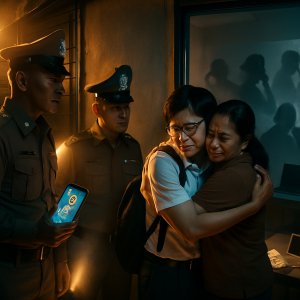On a typically bustling Tuesday, within the verdant embrace of Ranong’s Suan Sunandha Rajabhat University’s education center, the air was charged with a sense of anticipation. Prime Minister Srettha Thavisin, accompanied by the hum of diligent aides and the subtle click of camera shutters, settled into a gathering that would shape the future of not one, but two vibrant Thai provinces.
The Land Bridge megaproject, an awe-inspiring endeavor valued at a staggering one trillion baht, stands with the potential to transmute the logistical landscape, forging a deep-water port nexus spanning from Ranong to Chumphon. Envisioned to vault Thailand into a new era of connectivity with a motorway network and reinforced rail system, this colossus of construction has, understandably, stirred the local populace to the core
But beneath the fanfare lies a torrent of trepidation — civic groups, the essential heartbeat of Chumphon and Ranong, have convened with their leader, pleas in hand. Their message is unequivocal: pause the project, initiate a comprehensive review, establish an equitable investigative body. It’s a call for deliberation, representation, and most importantly, preservation.
The proposed committee is a tapestry of stakeholders: community linchpins grappling with the looming shadow of change, industry insiders whose fortunes may twist with the Land Bridge’s whims, and unbiased academics devoted to the sanctity of study. These concerted voices ring with a singularity of purpose — to safeguard their livelihoods be they tethered to the undulating nets of fishing boats, the whispering groves of agro-fields, or the thrumming pulse of tourist havens.
Public hearings have been suggested, a platform for every whisper and roar of opinion, in a collective call for transparency in a project that nudges the very essence of their existence. The earlier study of the Land Bridge, they claim, was deaf to the local heartbeats — a flaw they hope the Prime Minister’s ears are attuned to rectify.
“We cast our hopes upon Prime Minister Srettha, our sentinel in this quandary, to acknowledge the potency of our united voice regarding this potential maelstrom,” echoed the assemblage, articulated with poignant urgency.
The convocation with our esteemed Prime Minister culminated in an ascension of hope — a commitment to meticulous, independent scrutiny of the Land Bridge, unwavering in its thoroughness, and resolute in the inclusion of public sentiment.
Meanwhile, Senator Suradet Jiratiticharoen, armed with the precision of inquiry only the legislative can muster, posed a quartet of questions that resonated through the halls of power. Most pressing among them was one that pierced to the core of practicality — does this monumental architectural crossover actually render the cargo’s traverse swifter than the seasoned passage through Malacca Strait?
Concerns loom of a logistical paradox — a costly and time-intensive ballet of unloading and reloading freight, an antithesis to efficiency. Yet the Deputy Transport Minister Manaporn Charoensri, with the posture of a statesman sworn to diligence, assures a systematic response to every puzzle piece laid bare by the Land Bridge discourse.
Here, amid the poised dialogue and the earnest pleas for ecological and societal cognizance, a narrative unfolds. It’s a tale of a nation at a crossroads, daring to dream of infrastructural splendor, yet grappling with the convictions of its custodians — the everyday denizens whose stories, interwoven with the very lands in question, demand nothing short of a legacy of thoughtful stewardship for generations to come.


















Be First to Comment